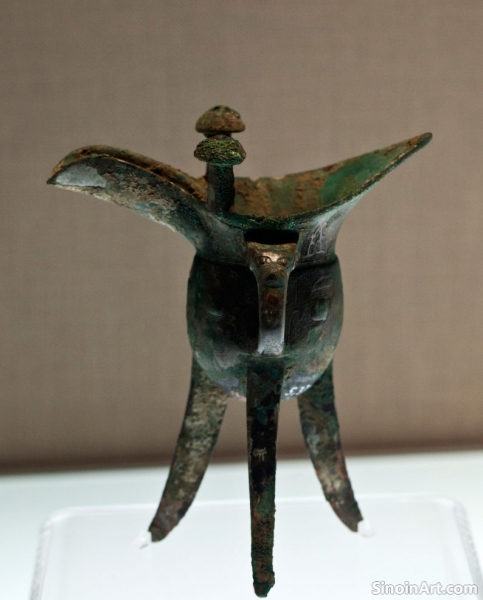The Challenge of Authenticating Ancient Chinese Bronze Ware: Forgeries and Expertise
|
The authentication of ancient Chinese bronze ware is a complex process that requires expertise in a variety of fields, including archaeology, art history, and metallurgy. Due to their value and historical significance, bronze objects are often subject to forgery, making careful analysis crucial for collectors and scholars alike. The careful study and analysis of these objects are essential for determining both their authenticity and their history.  Identifying authentic ancient Chinese bronze ware requires a combination of visual inspection, scientific testing, and a deep understanding of stylistic variations and historical trends. The process of analysis is complex and it involves multiple different approaches. The combined methods are required to properly evaluate these ancient artworks.  Visual analysis often focuses on examining the patina, style of decoration, casting techniques, and the overall form of the object. The experience gained from looking at many examples of the work is a critical part of the authentication process. This helps the researcher gain a visual understanding of the techniques used.  Scientific testing can involve the use of X-ray fluorescence (XRF), carbon dating, and other methods to analyze the chemical composition of the bronze, its age, and its manufacturing techniques. Modern technological analysis helps to determine the actual age and composition of the work. This data is valuable for comparison and authentication purposes. The ongoing efforts to combat the production of forgeries highlight the need for rigorous and scientific methods of authentication, ensuring that only authentic objects are recognized and valued. The care taken to examine and evaluate these objects is a key component in their preservation. |
Tag : bronze authentication, Chinese bronze forgeries, artifact analysis, art history, archaeological science
Related information
- Bronze Ware and the Representation of Mythical Creatures: Dragons, Phoenixes, and the Realm of the Supernatural
- The Production and Use of Bronze in Ancient Chinese Musical Instruments: Harmony and the Cosmos
- Bronze Ware and Ancient Chinese Notions of Heaven and Earth: A Cosmic Worldview
- Bronze Ware and Ancient Chinese Concepts of the Afterlife: Journey, Protection, and Eternity
- The Use of Bronze in Ancient Chinese Medicine: Exploring the Relationship Between Materials and Healing
This article explores the representation of mythical creatures on Chinese bronze ware, highlighting the symbolic power of dragons, phoenixes, and other fantastical beings, and revealing their connection to ancient Chinese beliefs about the spirit world.
This article explores the use of bronze in ancient Chinese musical instruments, highlighting the technical skill involved in their creation, the cosmological beliefs they represent, their role in ritual practices, and the interplay between music, spirituality, and the material world.
This article explores how bronze ware reflected ancient Chinese concepts of the cosmos, highlighting the integration of celestial symbols, the use of balanced forms, and the interplay between human activities and the perceived order of the universe.
This article explores the role of bronze ware in ancient Chinese funerary practices, highlighting the use of these objects to prepare the deceased for their journey into the afterlife, providing protection and ensuring their continued well-being in the spirit world.
This article explores the use of bronze in ancient Chinese medicine, highlighting the belief that the material itself possessed healing properties, and how it was used in creating vessels for preparing remedies, and in some therapeutic practices.